39 Common Backyard Birds in Kentucky (with Pictures)
Last Updated on
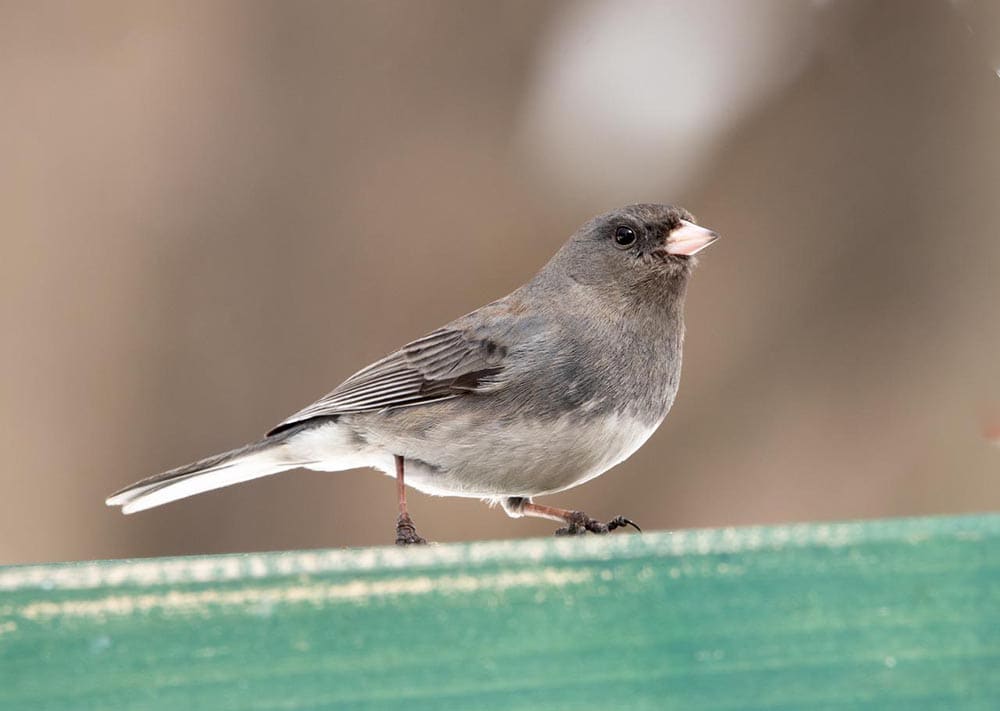
If you live in Kentucky and want to birdwatch from the comfort of your home, you’re in luck. There are tons of backyard birds in the Bluegrass State, and there are plenty of ways to attract even more of them to your yard.
Whether you’re trying to identify birds that are already out there or want to figure out how to get new birds to your backyard, you’ve come to the right place. Here, we highlighted 39 different birds that you can find in a Kentucky backyard and the conditions that they love.

The 39 Most Common Backyard Birds in Kentucky
1. American Robin

| Population: | 370 million |
| Wingspan: | 12 to 16 inches |
| Weight: | 2.7 ounces |
| Length: | 9.1 to 11 inches |
With an orange belly, a black head, and a gray body, the American robin is one of the most easily recognized birds out there. There are also hundreds of millions of them, so they’re common in Kentucky backyards.
2. Downy Woodpecker
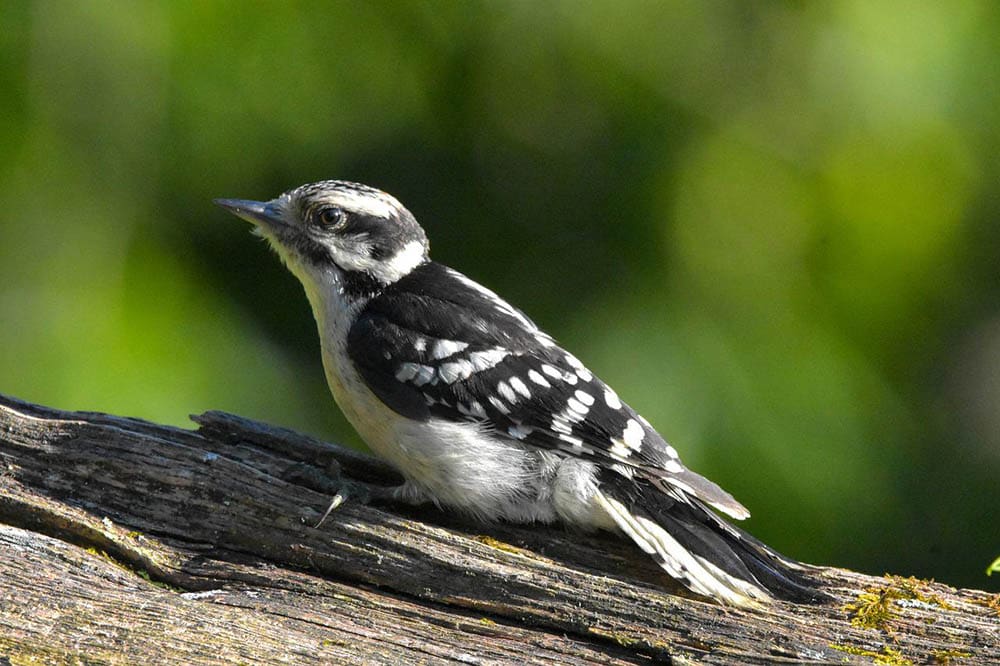
| Population: | 14 million |
| Wingspan: | 10 to 12 inches |
| Weight: | 0.74 to 0.99 ounces |
| Length: | 5.7 to 6.7 inches |
Woodpeckers may not be the first thing that you think of when talking about backyard birds, but the downy woodpecker is common in many backyards. These woodpeckers are tiny and often have a tuft of red on their heads.
3. Northern Cardinal

| Population: | 120 million |
| Wingspan: | 10 to 12 inches |
| Weight: | 1.5 ounces |
| Length: | 8.2 to 9.3 inches |
The northern cardinal has a bright-red appearance from head to tail, with only small amounts of black peppered throughout. Therefore, they’re one of the easiest-to-spot red birds in Kentucky.
4. Blue Jay
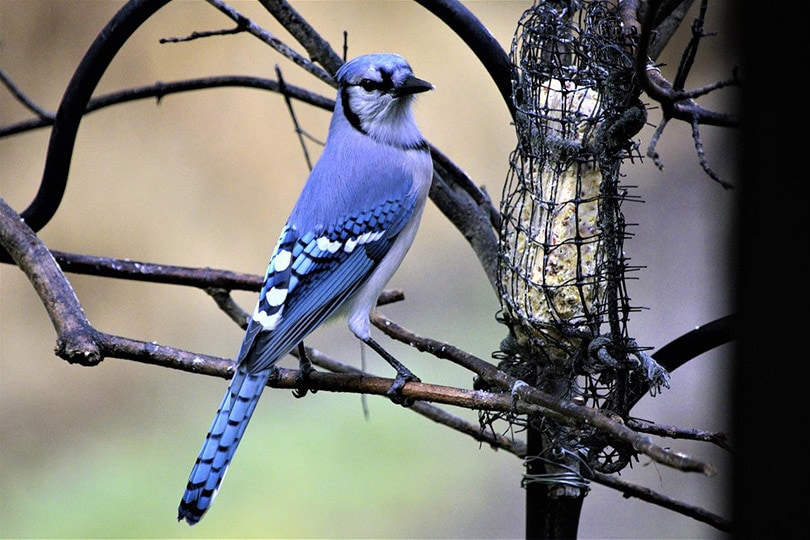
| Population: | 22 million |
| Wingspan: | 13 to 17 inches |
| Weight: | 2.3 to 3.8 ounces |
| Length: | 8.7 to 12 inches |
There are not as many blue jays as some other birds on this list, but with a population of 22 million, they’re not exactly rare either. They have a beautiful blue coat that makes it a real treat to spot one.
5. Mourning Dove
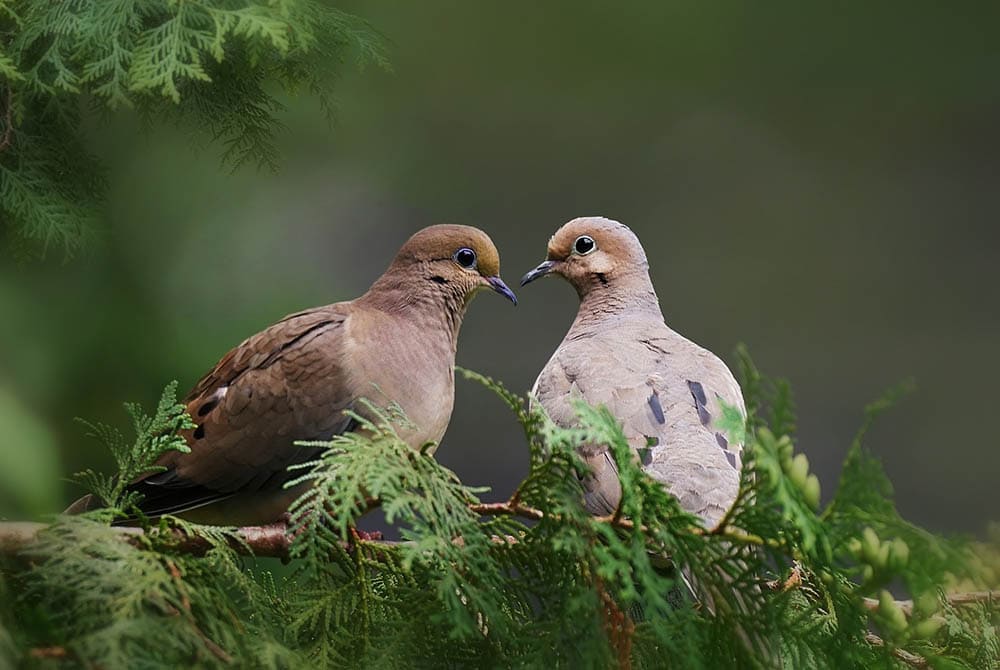
| Population: | 350 million |
| Wingspan: | 15 to 18 inches |
| Weight: | 4.2 ounces |
| Length: | 8.9 to 14 inches |
Mourning doves might not be the most colorful birds, but with a population of around 350 million, plenty can be spotted in Kentucky. They typically fly and nest close to the ground, so if you’re trying to spot a mourning dove, you shouldn’t have to look up!
6. Indigo Bunting

| Population: | 77 million |
| Wingspan: | 7 to 9 inches |
| Weight: | 0.4 to 0.65 ounces |
| Length: | 4.5 to 5 inches |
To the untrained eye, an indigo bunting might look like a blue jay, but that’s due to their bright-blue coloring. Indigo buntings have a more sparrow-like appearance, and they don’t have the large spots of white throughout their body that a blue jay has.
7. American Goldfinch
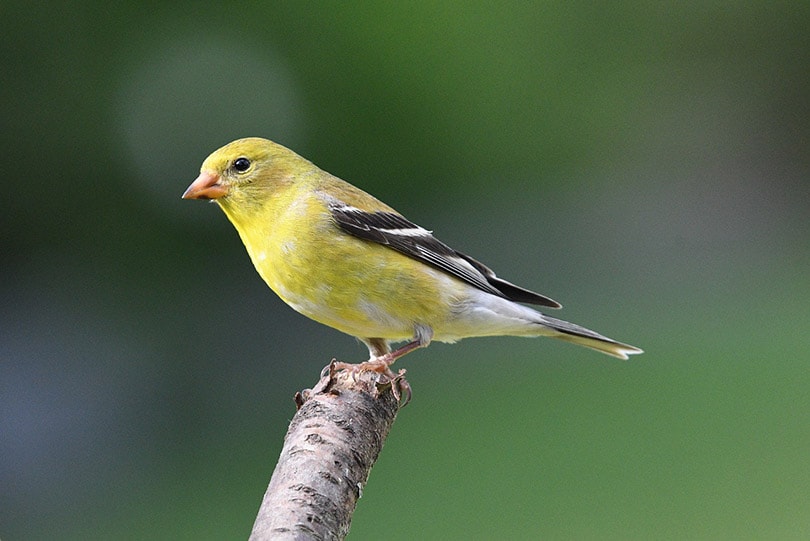
| Population: | 24 million |
| Wingspan: | 7.5 to 8.6 inches |
| Weight: | 0.5 ounces |
| Length: | 4.3 to 5 inches |
If you happen to spot an American goldfinch in your backyard, you’re likely to take notice. These small birds have a bright-yellow appearance with black wings and a black spot on their head, making them stand out as real beauties in the aviary world.
8. Red-Bellied Woodpecker
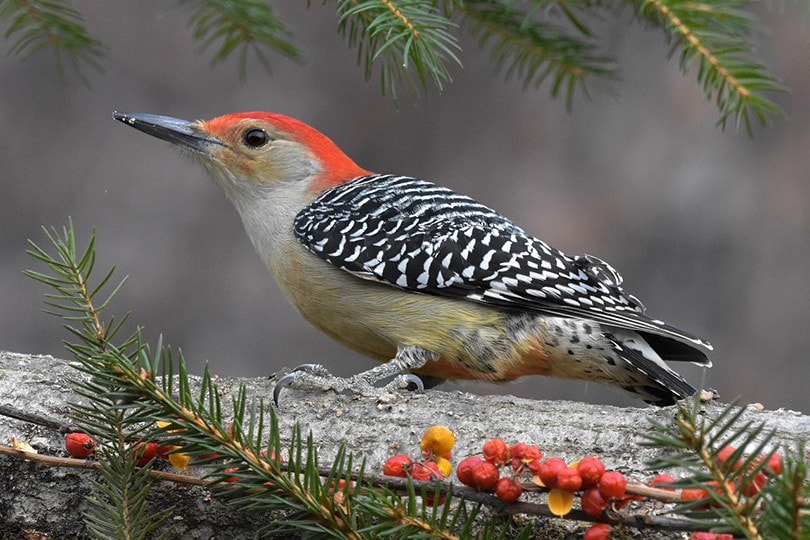
| Population: | 16 million |
| Wingspan: | 15 to 18 inches |
| Weight: | 2.6 ounces |
| Length: | 9 to 11 inches |
Despite their name, the red-bellied woodpecker has more red on their head than their belly! Their belly only has a faint red/pink appearance, while the rest is white. They’re beautiful birds with a striking appearance that you won’t soon forget.
9. Tufted Titmouse
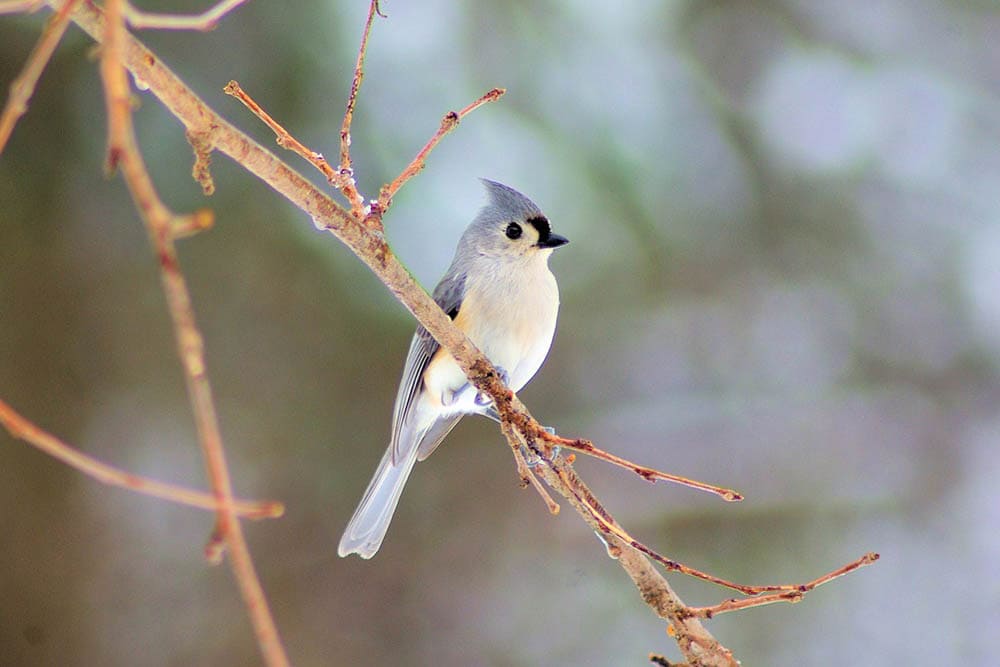
| Population: | 12 million |
| Wingspan: | 9 to 11 inches |
| Weight: | 0.75 ounces |
| Length: | 6 to 6.7 inches |
The tufted titmouse is a tiny bird with a declining population, but they’re still fairly common in backyards in Kentucky. They have a blue/gray appearance, with a pointed tuft on their forehead and a small pointed beak.
10. Yellow-Rumped Warbler
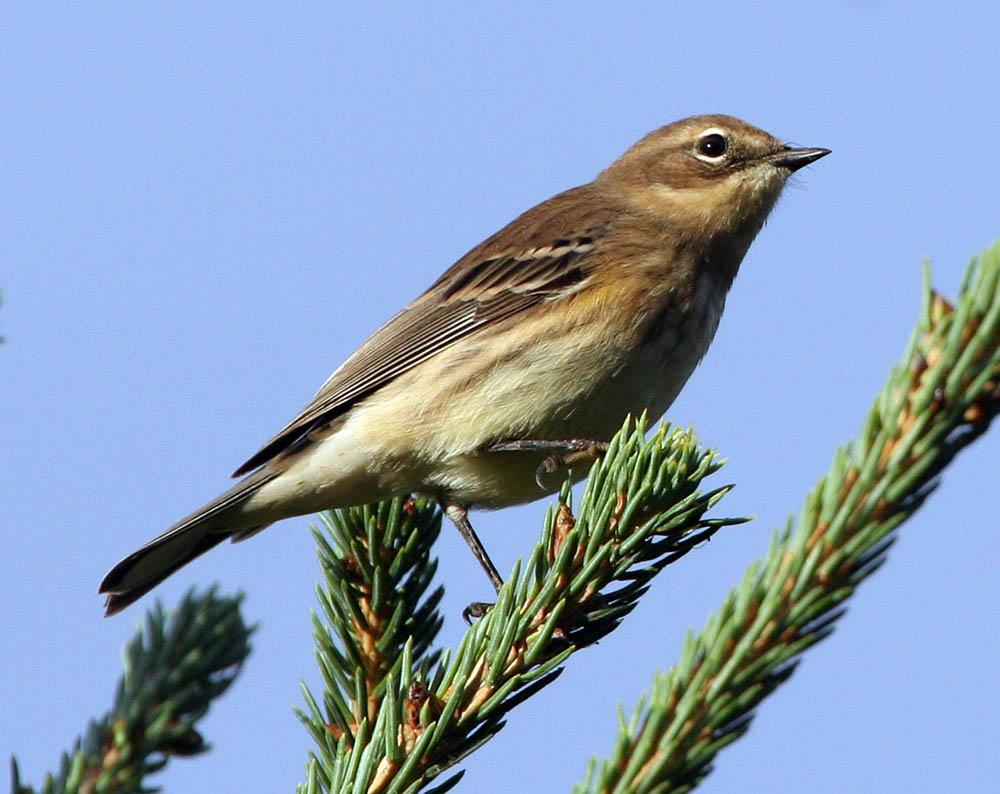
| Population: | 170 million |
| Wingspan: | 7.5 to 9.5 inches |
| Weight: | 0.4 ounces |
| Length: | 4.75 inches |
The yellow-rumped warbler has less yellow throughout their body than you might expect. They have a spot of yellow on their forehead and a little under each wing, but otherwise, they’re all white, gray, and black throughout.
12. Song Sparrow
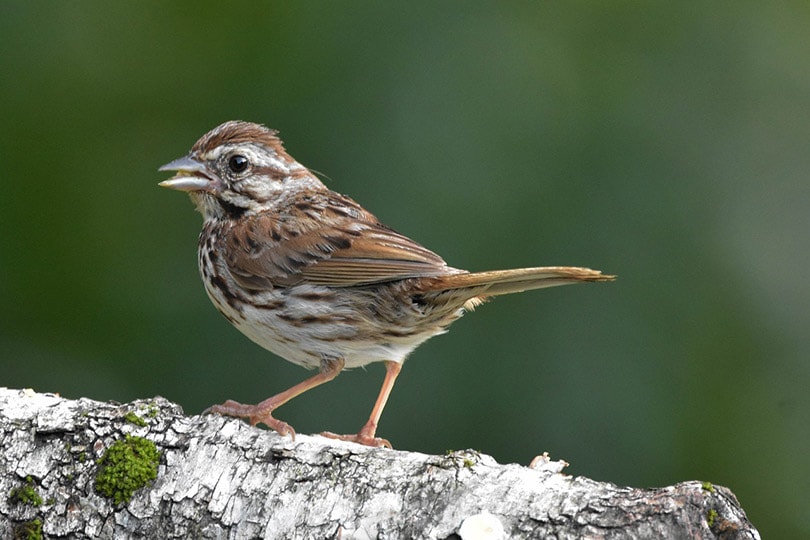
| Population: | 130 million |
| Wingspan: | 7 to 10 inches |
| Weight: | 0.65 ounces |
| Length: | 4.7 to 6.7 inches |
While the brown-and-white appearance of a song sparrow might not be too much to look at, the sounds that they make mean these birds are a joy to have around. Male song sparrows sing between eight to 12 different songs, giving them a uniquely diverse soundtrack for a backyard bird.
13. Carolina Chickadee
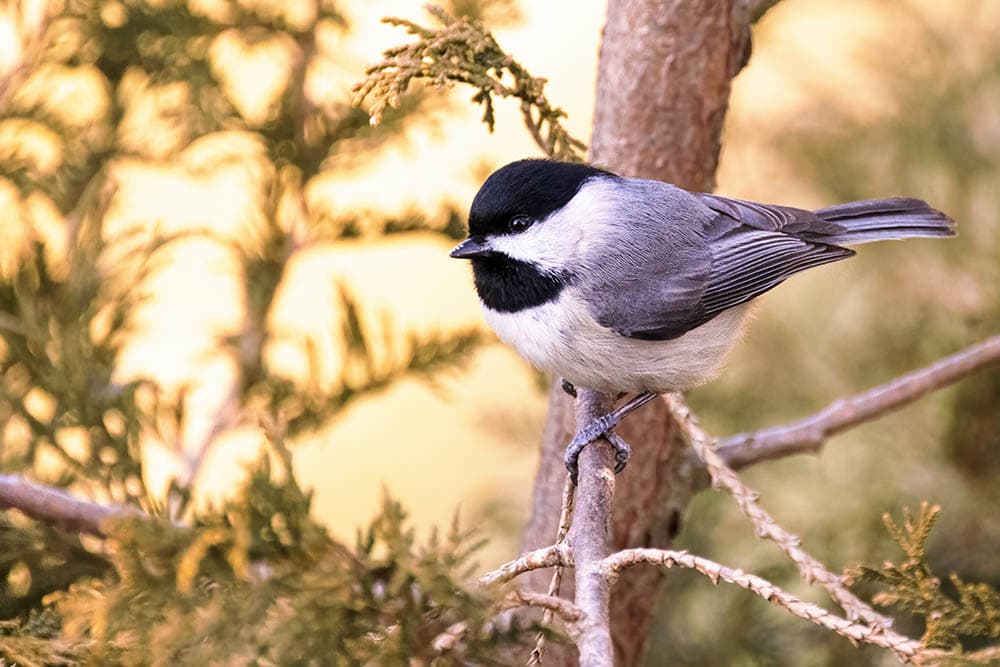
| Population: | 18 million |
| Wingspan: | 6 to 8 inches |
| Weight: | 0.35 ounces |
| Length: | 4 to 6 inches |
Kentucky isn’t that far from the Carolinas, so it’s no surprise that there are Carolina chickadees there too. The birds themselves are tiny, and the white band sandwiched between two black bands on their head sets them apart from other birds.
14. House Sparrow

| Population: | 82 million |
| Wingspan: | 9 inches |
| Weight: | 0.85 to 1.5 ounces |
| Length: | 6 inches |
The house sparrow is one of the most common brown birds in Kentucky, and while they’re cute, they don’t have any striking colors or notable features. They have a brown-and-white body with occasional flecks of black.
15. Eastern Phoebe
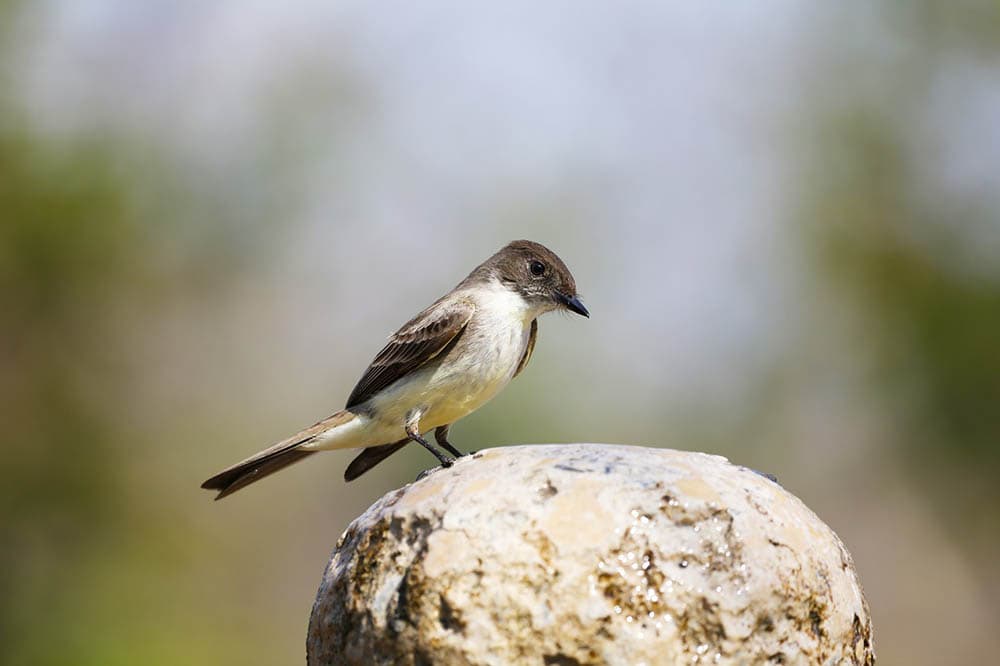
| Population: | 16 million |
| Wingspan: | 10 to 11 inches |
| Weight: | 0.7 ounces |
| Length: | 5.5 to 6.7 inches |
If you’re hearing beautiful chirps coming from your backyard, there’s a good chance that an eastern phoebe or two has stopped by. They’re small, plump birds with a gray-and-white appearance. The beautiful sounds that they make more than make up for what they lack in aesthetic appeal.
16. Eastern Bluebird

| Population: | 23 million |
| Wingspan: | 10 to 13 inches |
| Weight: | 1 to 1.2 ounces |
| Length: | 6.3 to 8.3 inches |
The eastern bluebird has a blue appearance around their head and wings, and their chest is a copper color that contrasts extremely well. This gives them a strikingly beautiful appearance that makes them a welcome guest in many Kentucky backyards.
17. European Starling
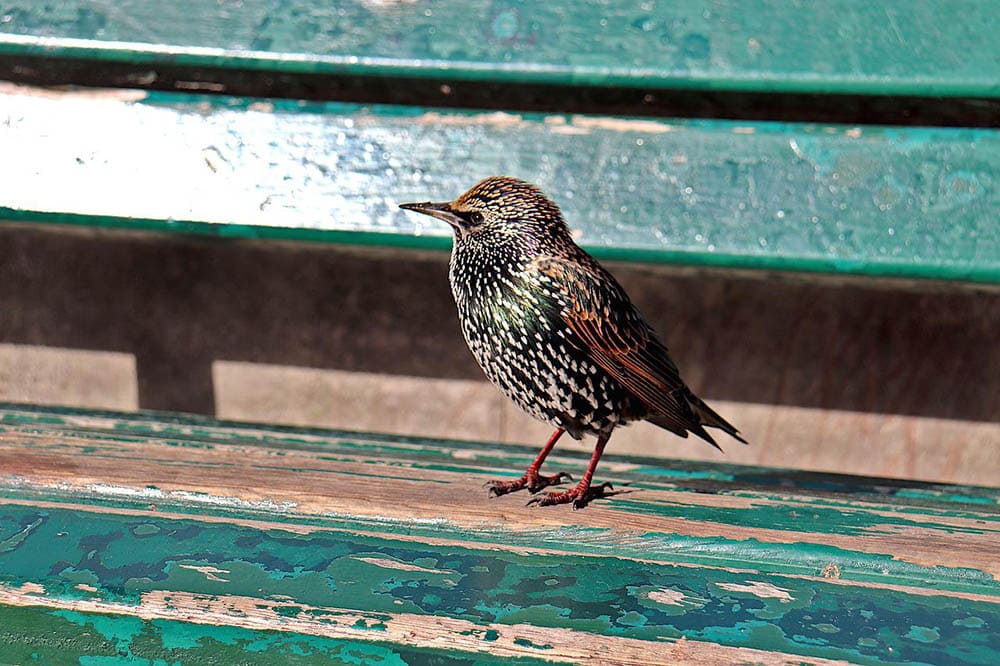
| Population: | 200 million |
| Wingspan: | 12 to 17 inches |
| Weight: | 2 to 3.6 ounces |
| Length: | 7.5 to 9 inches |
The European starling is a relatively recent addition to Kentucky backyards, and to many, this invasive species is nothing more than a pest. They’re a large bird that drives away many local species and makes it harder for them to get the food that they need.
18. Hairy Woodpecker
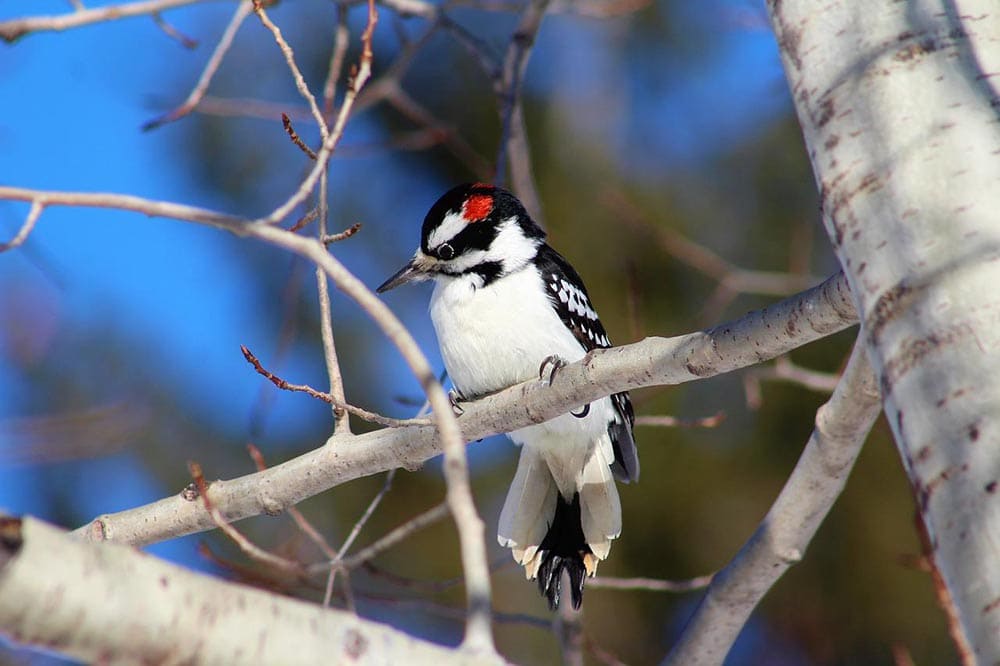
| Population: | 8.9 million |
| Wingspan: | 15 inches |
| Weight: | 1.5 to 3.5 ounces |
| Length: | 9 to 11 inches |
Unless you have a few well-developed trees in your yard, you probably won’t see too many hairy woodpeckers, but that’s probably a good thing. These might be small birds, but they possess powerful beaks and will forage along thick branches for food. If they settle on small trees, they could easily damage and destroy them!
19. American Crow
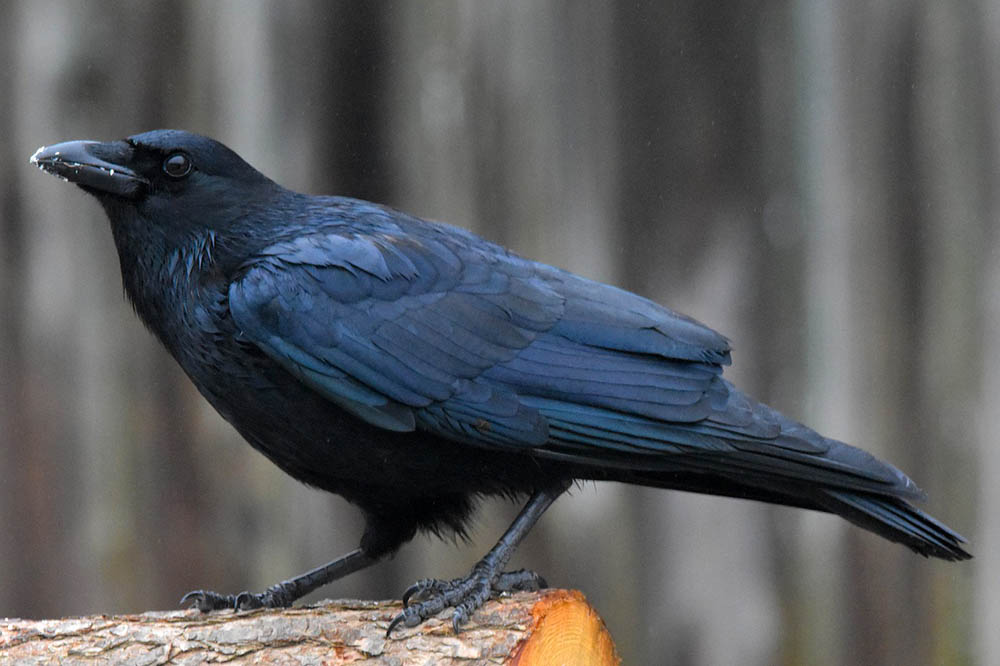
| Population: | 31 million |
| Wingspan: | 2.8 to 3.3 feet |
| Weight: | 0.7 to 1.4 pounds |
| Length: | 16 to 21 inches |
The American crow isn’t a typical fan favorite, but there’s no doubt that there are more than a few of these birds in Kentucky. They’re a large bird that thrives in backyards, cities, suburbs, and just about anywhere else that you can find humans.
20. White-Breasted Nuthatch

| Population: | 10 million |
| Wingspan: | 7.9 to 10.6 inches |
| Weight: | 0.6 to 1.1 ounces |
| Length: | 5 to 5.5 inches |
While you can’t just simply put out more bird feeders to attract white-breasted nuthatches to your backyard, they’re active enough that you’ll see them passing through, anyway. If there are any insects for them to munch down on in your yard, they’ll keep coming back!
21. Red-Winged Blackbird
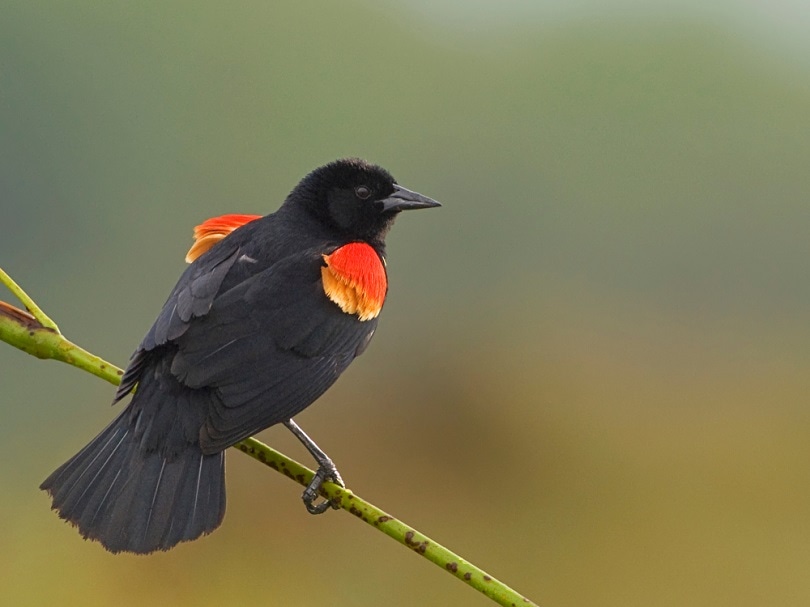
| Population: | 210 million |
| Wingspan: | 12 to 16 inches |
| Weight: | 1.1 to 2.7 ounces |
| Length: | 6.7 to 9.1 inches |
The red-winged blackbird is larger than many other birds on this list, but they’re significantly smaller than the crow, which many people confuse this bird with. The red-winged blackbird is entirely black except for a red-and-yellow spot near the front of their wings.
22. Brown-Headed Cowbird
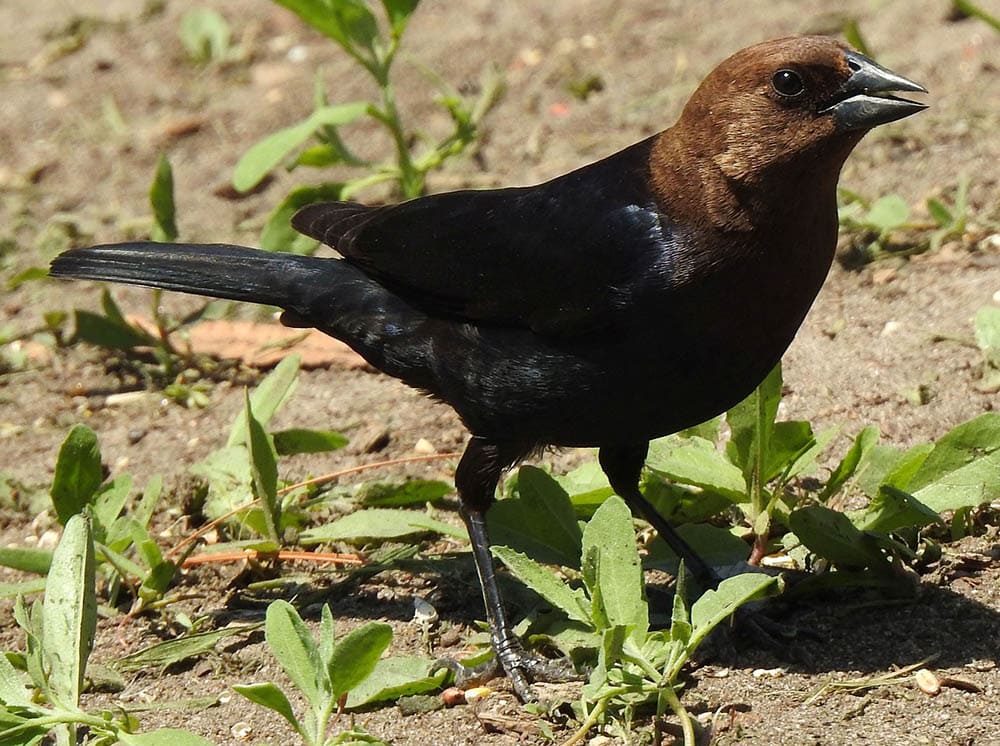
| Population: | 56 million |
| Wingspan: | 12 to 15 inches |
| Weight: | 1.5 ounces |
| Length: | 6 to 8.5 inches |
Many people view the brown-headed cowbird as a nuisance bird because of how they lay their eggs. Females place them in other birds’ nests and have those birds raise their babies. This usually comes at the expense of other birds’ young.
23. House Wren

| Population: | 160 million |
| Wingspan: | 5.9 inches |
| Weight: | 0.35 to 0.4 ounces |
| Length: | 4.3 to 5.1 inches |
The house wren is one of the most common songbirds in all of the United States, and Kentucky is no exception. This bird has a long beak and a mostly brown coloring. They’re not the most aesthetically appealing, but due to the beautiful songs that they sing, they’re still welcome additions to any backyard!
24. Common Grackle
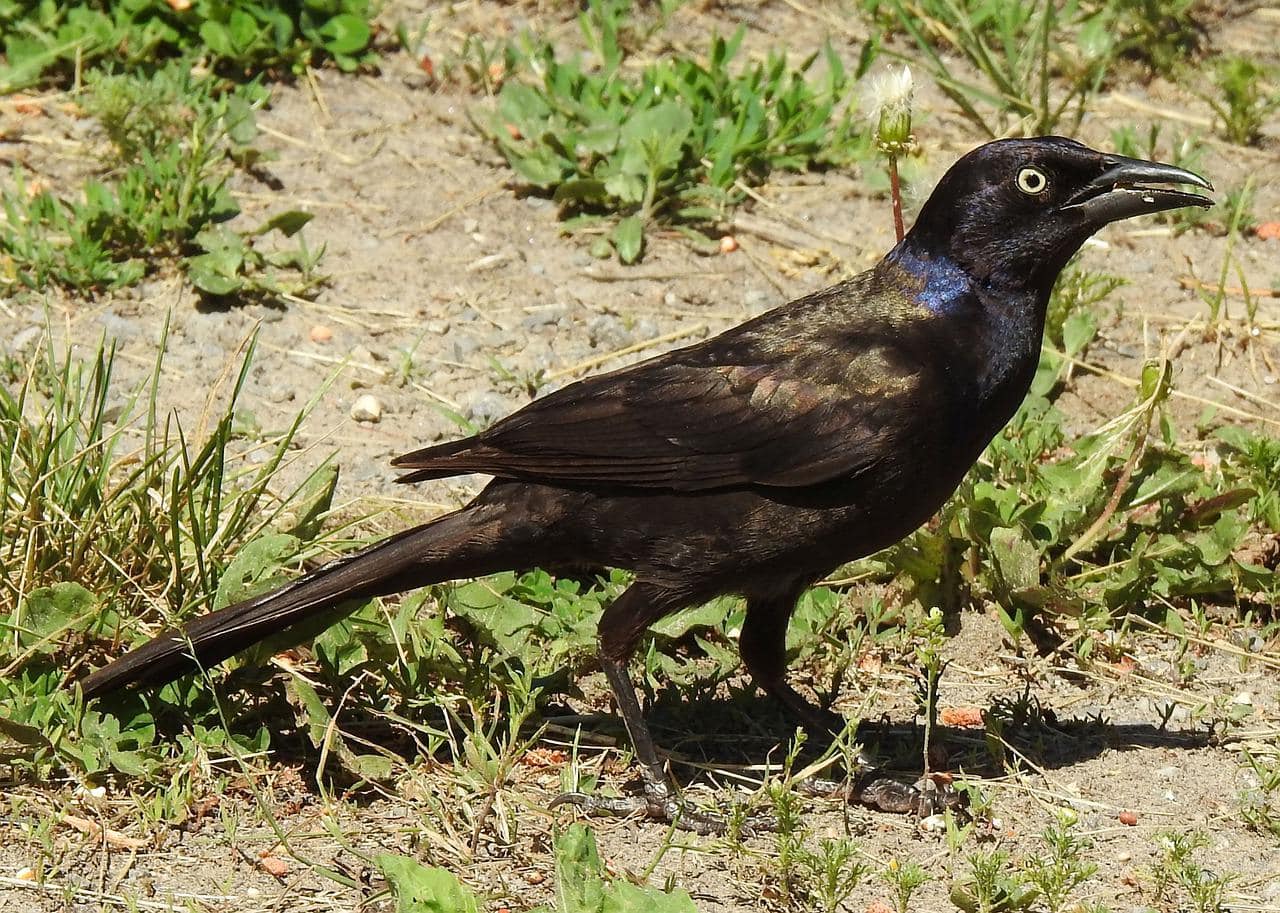
| Population: | 73 million |
| Wingspan: | 14 to 18 inches |
| Weight: | 2.5 to 5 ounces |
| Length: | 11 to 13 inches |
The common grackle is a bird that you can often spot in your backyard, but to farmers, they’re the last thing that they want to see. The common grackle loves chowing down on corn, and a single flock can cause millions of dollars of damage.
They’ll eat just about anything, though, which is why they’re often around birdfeeders. They can thrive in cities too and don’t mind eating garbage if they can find it.
25. Northern Mockingbird
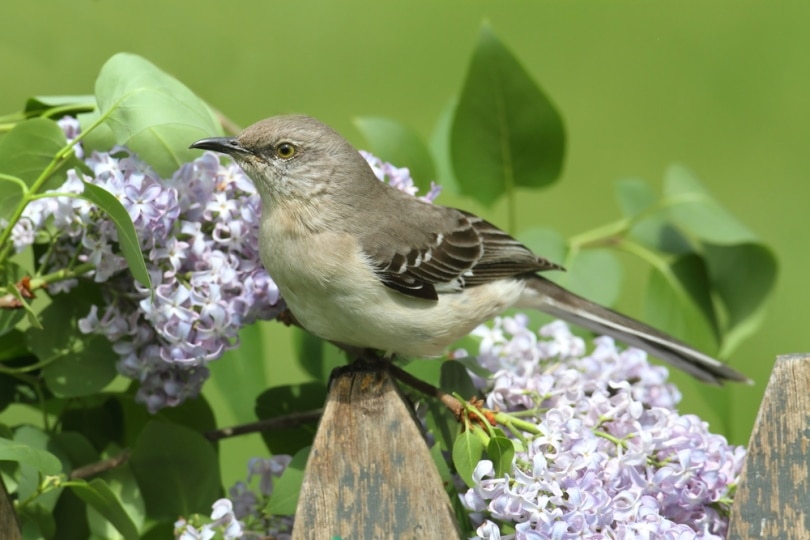
| Population: | 45 million |
| Wingspan: | 12 to 14 inches |
| Weight: | 1.7 ounces |
| Length: | 8 to 10 inches |
Few birds sing as much as the northern mockingbird. They practically sing all day and sometimes, even at night! They are territorial birds, so if you have one in your backyard, you likely won’t have other birds hanging around, and if you do, they’ll put on a display.
26. Eastern Towhee

| Population: | 29 million |
| Wingspan: | 10 inches |
| Weight: | 1 to 2 ounces |
| Length: | 8 inches |
The eastern towhee is a type of sparrow that you might see in your Kentucky backyard. They have a black head with a white underbody and a striking chestnut brown in between. They love areas with heavy undergrowth, so if that sounds like your yard, you’re likely to have a few around.
27. Northern Flicker
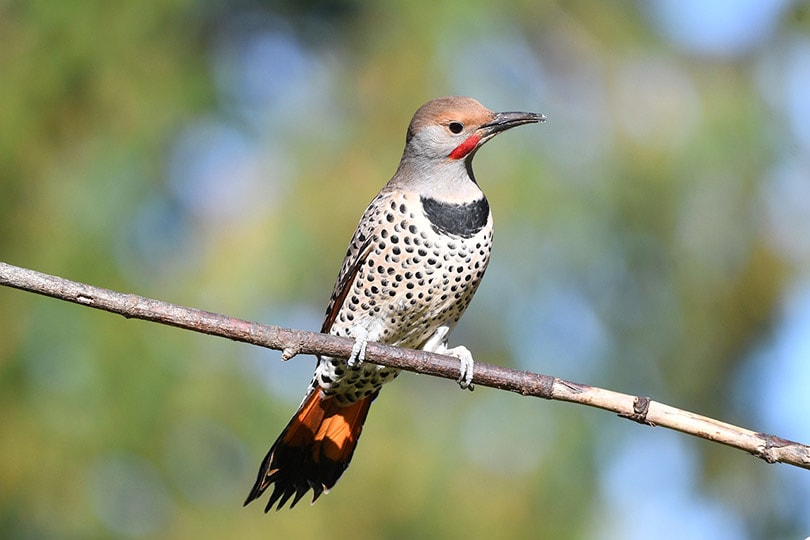
| Population: | 16 million |
| Wingspan: | 16.5 to 20 inches |
| Weight: | 4 to 5.5 ounces |
| Length: | 11 to 12 inches |
The northern flicker is a woodpecker, so if you want to spot any in your backyard, you’ll need to have a few mature trees. This bird has a spotted chest and wings and loves hanging out near the tree line of forests.
28. Dark-Eyed Junco

| Population: | 630 million |
| Wingspan: | 7 to 10 inches |
| Weight: | 0.6 to 1 ounce |
| Length: | 5.5 to 6.5 inches |
While you can’t find dark-eyed juncos throughout Kentucky for the entire year, when the winter months arrive, they come in force. They love hitting up bird feeders, and there are over 600 million of them, so they’re quite common in backyards during the cold months.
29. Barn Swallow

| Population: | 190 million |
| Wingspan: | 12.5 to 13.5 inches |
| Weight: | 0.6 to 0.7 ounces |
| Length: | 5.7 to 7.8 inches |
Barn swallows are small birds, but you need a bit of open space in your backyard to have them around. That said, they eat flying insects, so the chances of spotting a barn swallow in your backyard are slim to begin with.
30. Eastern Kingbirds

| Population: | 13 million |
| Wingspan: | 13 to 15 inches |
| Weight: | 1.2 to 2 ounces |
| Length: | 7.5 to 9 inches |
If you have standing water on your property or just a large open space, you might spot an eastern kingbird or two in your backyard. They eat flying insects, so they tend to hand out near the open spaces where these insects thrive.
31. Pileated Woodpecker

| Population: | 1.9 million |
| Wingspan: | 30 inches |
| Weight: | 9 to 14 ounces |
| Length: | 16 to 19 inches |
The pileated woodpecker is a large bird, and unless you live in the middle of a mature forest, the chances of seeing one in your backyard are a bit slim. However, the pileated woodpecker is a year-long resident in all of Kentucky, so they are around for you to find.
32. Chipping Sparrow
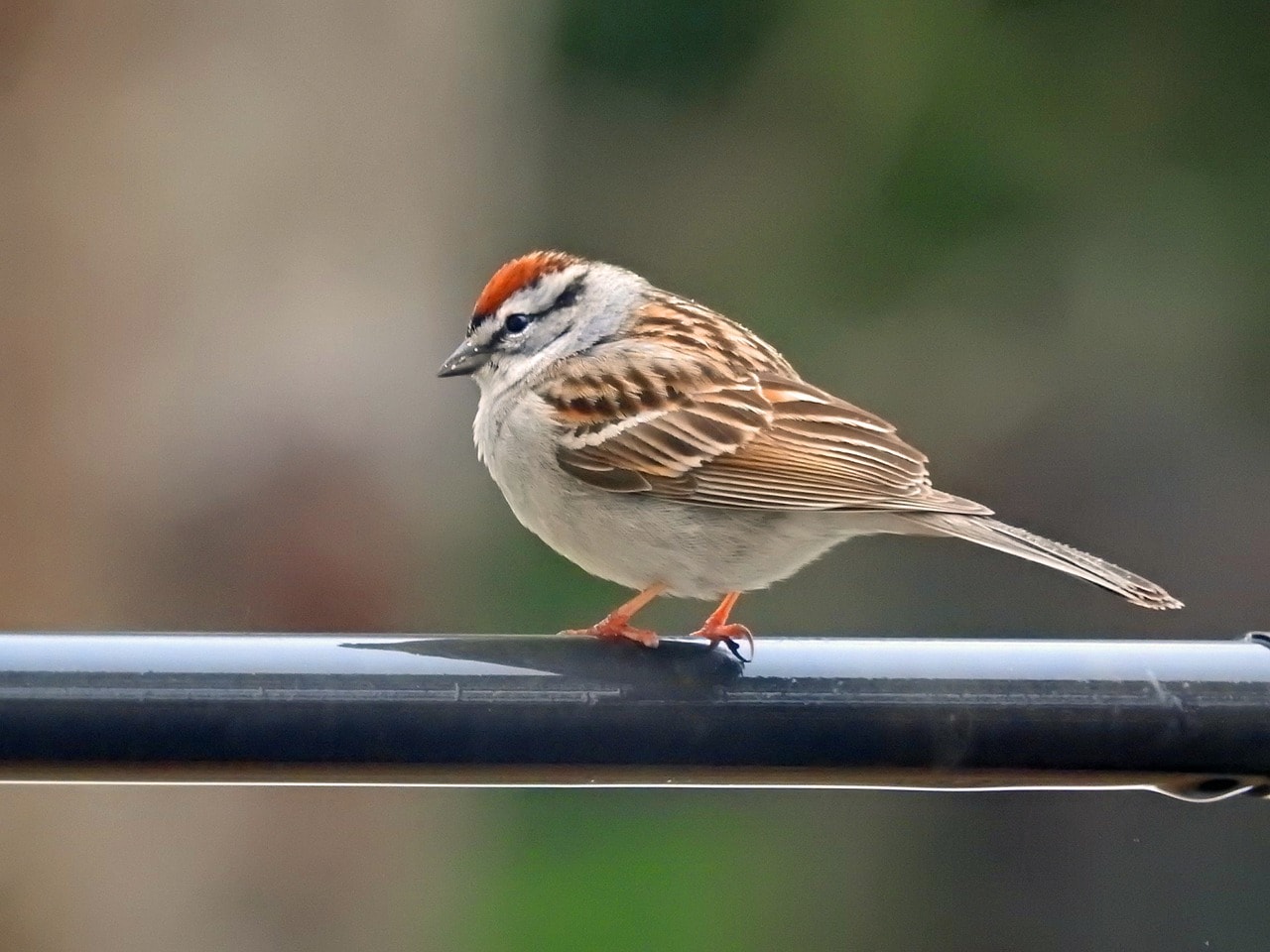
| Population: | 240 million |
| Wingspan: | 8 to 9 inches |
| Weight: | 0.4 ounces |
| Length: | 5 to 6 inches |
Even for a sparrow, the chipping sparrow is a small bird and has a small beak. They have a brown, white, and gray coloring. They’re easy to attract to your backyard — just put out millet, peanut hearts, or pecans, and chipping sparrows will flock to your yard!
33. Ruby-Throated Hummingbird
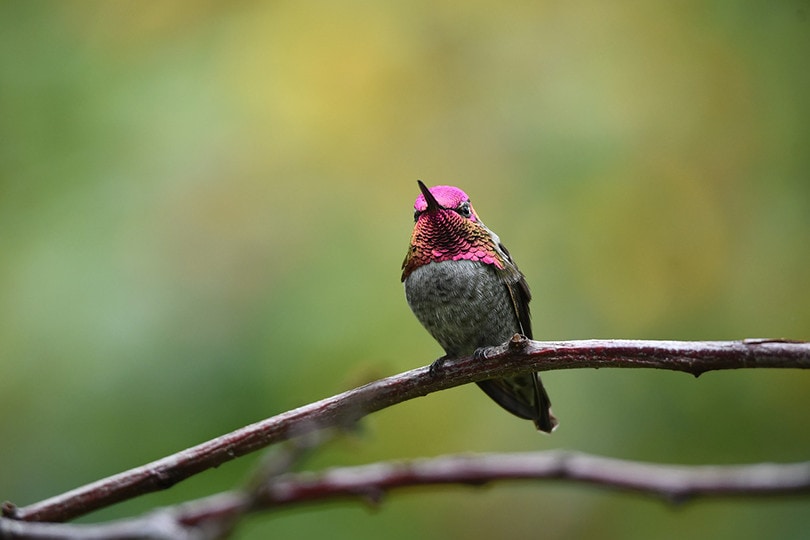
| Population: | 7 million |
| Wingspan: | 3 to 4 inches |
| Weight: | 0.1 ounces |
| Length: | 3.5 inches |
Hummingbirds are seasonal birds in Kentucky, and if you keep clean, bright, and nutrient-dense nectar feeders around, you are sure to spot a few ruby-throated hummingbirds flying through.
34. Eastern Meadowlark
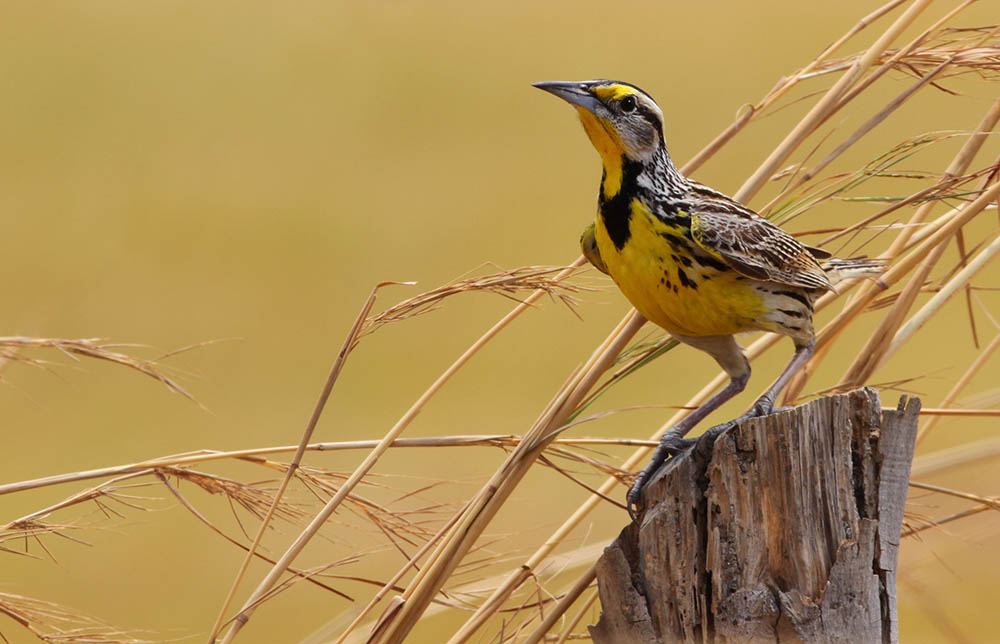
| Population: | 30 million |
| Wingspan: | 14 to 16 inches |
| Weight: | 2.5 to 5.5 ounces |
| Length: | 7.5 to 11 inches |
We can’t talk about Kentucky songbirds without mentioning the eastern meadowlark. They have a beautiful yellow coloring along their chest, and males make a flute-like sound when they sing. They love fenceposts, which is why it’s so easy to spot them in suburban backyards.
35. Tree Swallow
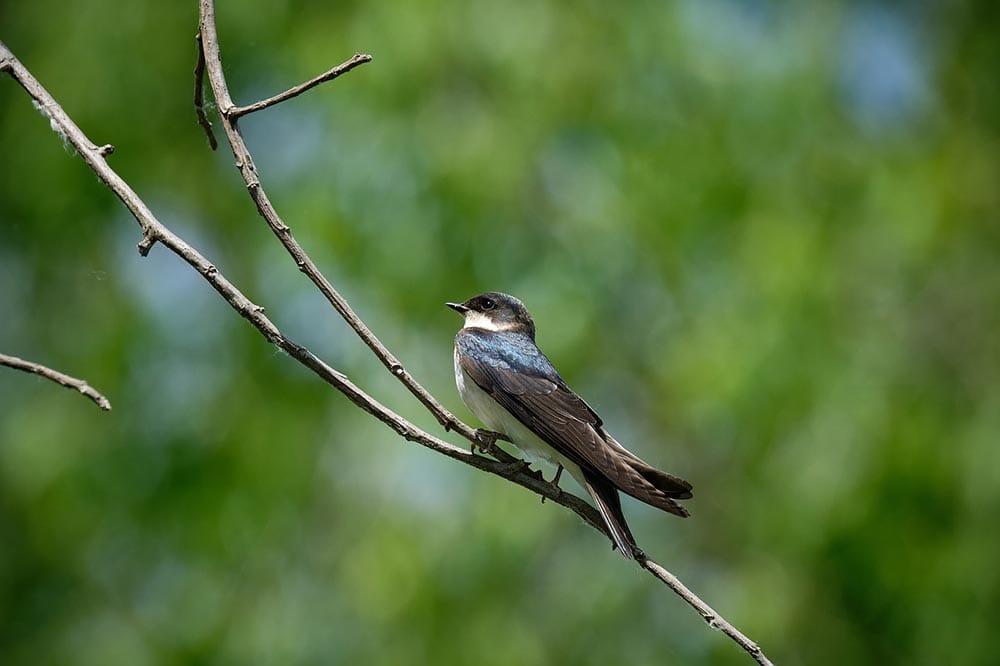
| Population: | 20 million |
| Wingspan: | 12 to 14 inches |
| Weight: | 0.6 to 0.9 ounces |
| Length: | 4.7 to 5.5 inches |
The tree swallow is a songbird that you can find in Kentucky, particularly around standing water and open spaces. They have a beautiful blue coloring and eat flying insects, so they thrive in areas where these insects are plentiful.
36. Brown Thrasher
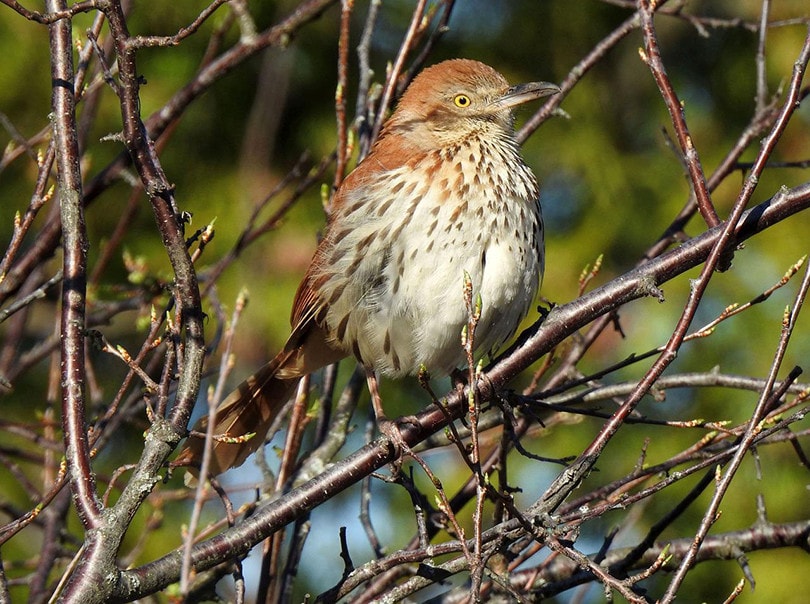
| Population: | 6.2 million |
| Wingspan: | 11 to 13 inches |
| Weight: | 2 to 3 ounces |
| Length: | 9 to 12 inches |
If you’re looking for the Kentucky songbird with the most versatile repertoire, it might be a brown thrasher. Males can sing over 1,100 different song types, making them a joy to listen to in your backyard.
Stay away from their nests, though, as these birds are extremely territorial and don’t mind pecking at pets and humans that get too close.
37. Rock Pigeon
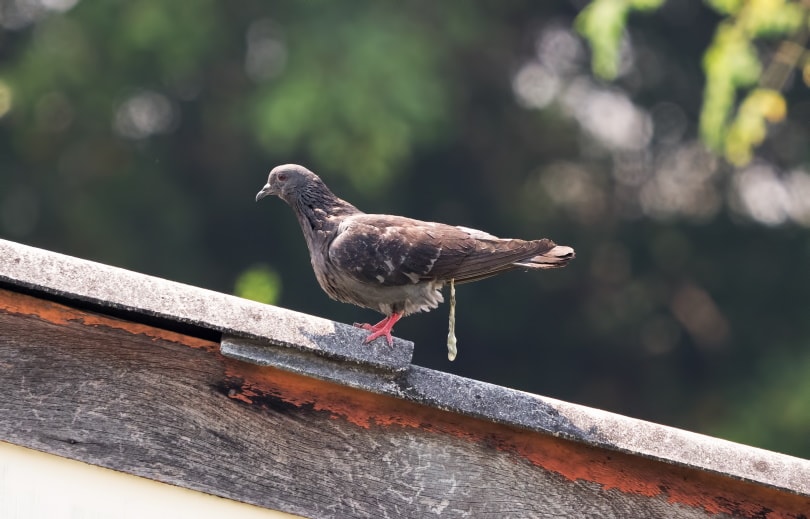
| Population: | 120 million |
| Wingspan: | 20 to 26 inches |
| Weight: | 8.5 to 13 ounces |
| Length: | 12.5 inches |
There are over 100 million of these birds in the United States, and quite a few of them live in Kentucky. They thrive in areas with humans, eating garbage and anything else that they can get their beaks on.
38. Baltimore Oriole

| Population: | 6 million |
| Wingspan: | 9 to 12 inches |
| Weight: | 1 to 1.5 ounces |
| Length: | 6 to 8 inches |
If you’re looking for a way to use your hummingbird feeder when it’s not hummingbird migration season, just leave it out and see what stops by. There’s a good chance that you’ll get a Baltimore Oriole or two, and with their population numbers in decline, they’ll greatly appreciate the feeder.
39. Chimney Swift

| Population: | 7.7 million |
| Wingspan: | 11 to 12 inches |
| Weight: | 0.6 to 1 ounce |
| Length: | 4.7 to 6 inches |
These birds get their name from their tendency to build their nests in chimneys. They lack the ability to perch, so they need to hang off the side of vertical walls. If you’re looking to attract these birds but don’t want to have them in your chimney, you can put up special nesting boxes for them.

In Conclusion
Now that you know more about common backyard birds in Kentucky, all you need to do is put out a few feeders and a birdbath or two, and watch them come flocking to your yard.
Birds are abundant in Kentucky, so if you’re looking to do some birdwatching, you’re in for a treat!
Featured Image Credit: simardfrancois, Pixabay
Table of Contents
- The 39 Most Common Backyard Birds in Kentucky
- 1. American Robin
- 2. Downy Woodpecker
- 3. Northern Cardinal
- 4. Blue Jay
- 5. Mourning Dove
- 6. Indigo Bunting
- 7. American Goldfinch
- 8. Red-Bellied Woodpecker
- 9. Tufted Titmouse
- 10. Yellow-Rumped Warbler
- 12. Song Sparrow
- 13. Carolina Chickadee
- 14. House Sparrow
- 15. Eastern Phoebe
- 16. Eastern Bluebird
- 17. European Starling
- 18. Hairy Woodpecker
- 19. American Crow
- 20. White-Breasted Nuthatch
- 21. Red-Winged Blackbird
- 22. Brown-Headed Cowbird
- 23. House Wren
- 24. Common Grackle
- 25. Northern Mockingbird
- 26. Eastern Towhee
- 27. Northern Flicker
- 28. Dark-Eyed Junco
- 29. Barn Swallow
- 30. Eastern Kingbirds
- 31. Pileated Woodpecker
- 32. Chipping Sparrow
- 33. Ruby-Throated Hummingbird
- 34. Eastern Meadowlark
- 35. Tree Swallow
- 36. Brown Thrasher
- 37. Rock Pigeon
- 38. Baltimore Oriole
- 39. Chimney Swift
- In Conclusion
About the Author Robert Sparks
Robert’s obsession with all things optical started early in life, when his optician father would bring home prototypes for Robert to play with. Nowadays, Robert is dedicated to helping others find the right optics for their needs. His hobbies include astronomy, astrophysics, and model building. Originally from Newark, NJ, he resides in Santa Fe, New Mexico, where the nighttime skies are filled with glittering stars.
Related Articles:
Monocular vs Telescope: Differences Explained (With Pictures)
10 Types of Hummingbirds in Arkansas (With Pictures)
8 Types of Hummingbirds in Nebraska (With Pictures)
5 Types of Hummingbirds in Idaho (With Pictures)
3 Types of Hummingbirds in Mississippi (With Pictures)
8 Types of Hummingbirds in Kansas (With Pictures)
5 Types of Hummingbirds in West Virginia (With Pictures)
5 Types of Hummingbirds in Ohio (With Pictures)
